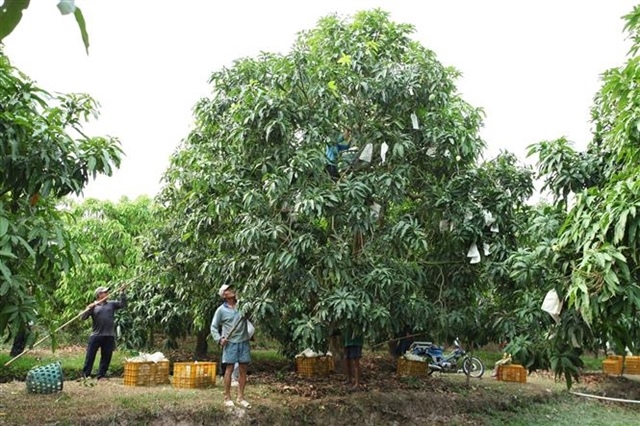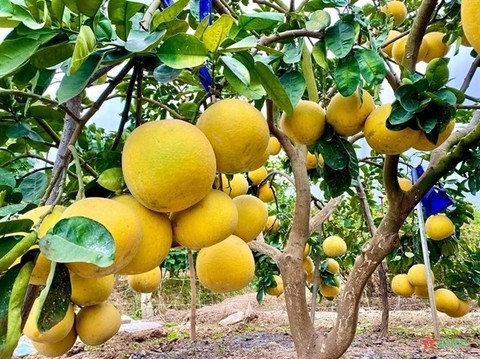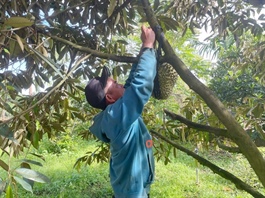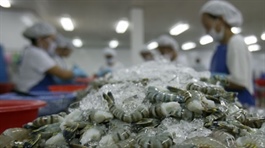Mushroom industry facing a growth block
Mushroom industry facing a growth block
Despite challenges, several Vietnamese companies are making notable strides in the mushroom sector.
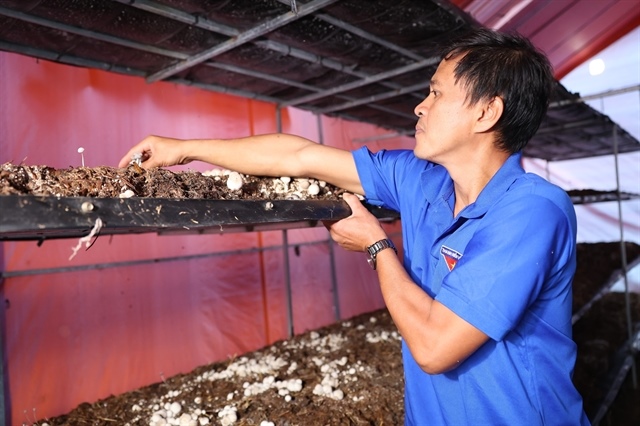
A farmer in former Bà Rịa-Vũng Tàu Province inspects mushrooms at his farm. — VNA/VNS Photo Hoàng Nhị |
Despite a long history of mushroom cultivation and strong domestic demand, the industry remains trapped in a paradox as a major importer rather than a leading exporter of mushroom products, experts have said.
Mushroom farming has existed in Việt Nam for over 150 years, dating back to the French colonial period. Today, the country ranks 11th in mushroom exports but is the third-largest importer of processed mushrooms globally, after the US and Hong Kong (China), and is also second in mushroom powder imports, behind only the US.
Việt Nam produces 250,000-270,000 tonnes of mushrooms annually, a relatively modest output given the country’s plentiful raw materials for cultivation. Experts noted that the rice industry alone generates 42-47 million tonnes of straw each year, alongside other agricultural by-products such as sawdust, cotton waste and bagasse - all of which provide ideal substrates for mushroom farming.
Nguyễn Hải Châu, founder of Hà Nội-based Sumo Nhat Viet JSC which specialises in agricultural technology, estimated that mushroom cultivation could raise the value of one hectare of farmland to VNĐ500 million per year by combining income from fresh and processed mushrooms and bio-fertiliser production.
Mushroom farming not only increases farmers’ income but also helps reduce agricultural waste and environmental pollution, Châu told saigontimes.vn.
However, success in mushroom cultivation remains elusive for many, Châu said.
Reports by several research institutions highlight major challenges, including poor seed quality and limited research and development. Most mushroom varieties such as straw and oyster mushrooms still rely on imports due to insufficient local R&D and unstable domestic strains.
The industry also suffers from fragmented, manual production, lacking large-scale, technology-driven cultivation models. Post-harvest preservation remains a major challenge, as mushrooms have a very short shelf life and must be consumed fresh or processed - dried or salted - within 24 hours of harvest.
Meanwhile, experts and industry entrepreneurs said that Việt Nam struggles to cultivate mushroom varieties suited to cold climates. Given the country’s tropical conditions, cold-loving mushrooms can only be stored for seven to ten days, while warm-weather varieties last just five to seven days even when refrigerated.
Successful business examples
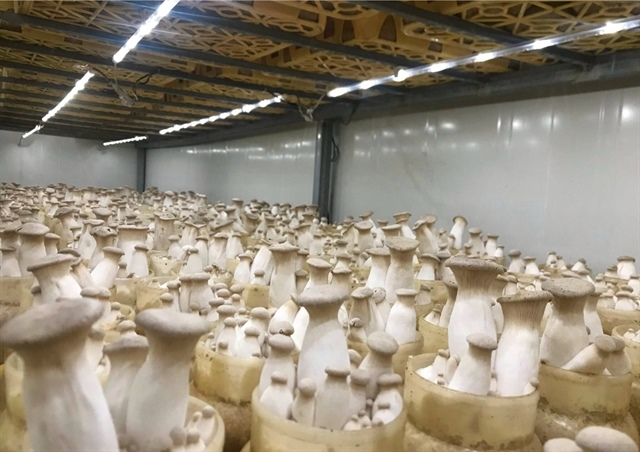
A farmer in former Bà Rịa-Vũng Tàu Province inspects mushrooms at his farm. — VNA/VNS Photo Hoàng Nhị |
Despite these challenges, several Vietnamese companies are making notable strides in the mushroom sector.
In 2023, Bac Au High-Tech Food JSC (Bac Au Mushroom) in Quảng Ngãi Province invested US$4 million to build a fully automated mushroom cultivation factory in Buôn Ma Thuột, Đắk Lắk, using Japanese and Korean technology under the guidance of Japanese organic cold mushroom experts. With an annual capacity of 1,800 tonnes, the factory produces cold-loving varieties such as enoki, chicken thigh and seafood mushrooms.
According to Lê Dương, chairman of Union Trading Services Trading JSC, Bac Au Mushroom’s distribution partner, the sweetness of mushrooms grown in Việt Nam will probably be more suitable for the Vietnamese taste.
Other firms, like Vinamit, are focusing on medicinal mushroom products. Its dried shiitake mushroom chips, sold in 80-gramme packages for VNĐ136,500, are consistently in high demand
Vinamit CEO Nguyễn Lâm Viên told saigontimes.vn that Thailand has learned from the agricultural experiences of Taiwan (China) and Japan. Taiwan is following Japan’s path.
"If they have been successful, why shouldn’t Việt Nam learn from the strengths of these three agricultural countries?" Viên said.
Việt Nam’s tropical and cool-weather regions, such as Sapa, Đà Lạt, and Tam Đảo, also provide suitable conditions for a wide range of mushrooms, including wild varieties, representing untapped potential for medicinal mushroom production in the country’s forests.
A June 2025 report by British market research firm Ken Research estimated Việt Nam's mushroom market at around $362 million, based on a five-year data analysis. This growth is primarily driven by increasing customer demand for healthy food options, rising awareness of nutritional and medical benefits of mushrooms and the expansion of the food processing industry.
As per the report, the market has seen a significant uptick in both domestic consumption and exports, reflecting a broader trend toward plant-based diets.
It noted that key cities dominating the market include Hà Nội and HCM City, which serve as major hubs for distribution and consumption. The urban population in these cities are increasingly health conscious, leading to a higher demand for fresh and processed mushrooms.
Additionally, the presence of numerous food processing factories in these areas contributes to the market's growth.
Meanwhile, the market research company IMARC projects Việt Nam's mushroom market could reach $600 million by 2033, growing at a compound annual growth rate (CAGR) of 5.2 per cent between 2025 and 2033.
IMARC attributed this growth to changing dietary preferences and the increasing inclination toward healthier food options, Government support for mushroom cultivation, the rise of e-commerce, growing demand for sustainable and organic products, the popularity of vegetarian and vegan diets, and increased research into medicinal mushrooms.
- 08:11 10/11/2025




